INTRODUCTION
Many times during the course of my life I people have asked me where have I learned the basic chess rules.
And I have always answered rather reluctantly that it was my uncle who thought me everything.
Why reluctantly? Because while other kids were playing computer games, I was losing games where I was given a queen odds, or where I had 5 min against 10 seconds.
Just in the case you were wondering why have I started playing chess seriously only at the age of 19.

You might be wondering why on earth am I mentioning things that only my therapist should hear.
Because precisely of my uncle’s rigorous regime (and I might have overexaggerated things a bit), I have learned the rules of chess at a very young age.
And consequently, I have considered them rather easy to grasp. Which is why I often get surprised when someone who is new to the beautiful chess world has trouble with some basic chess rules.
Furthermore, such ignorance is typicall for many chess players, who have little patience and understanding for mistakes of novice players.
Therefore, I have decided that it might not be very bad idea to write an “apologetic” series of posts dedicated to basic chess rules.
-
BASIC PIECE MOVEMENT
THE QUEEN
In chess, as much as in life, the female pieces play the main roles. The queen is the most powerful piece of wood a chessplayer will ever hold. On the piece value scale, the Queen’s value is equal to value of nine pawns.
It comes as a no surprise therefore that the Queen also has the greatest freedom of movement. The queen can move in any direction (either vertically, diagonally or horizontally) for as many squares as possible.
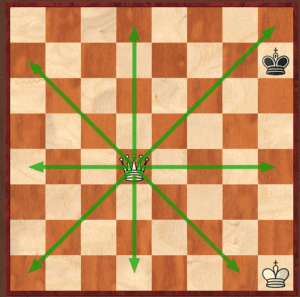
THE ROOK
The Rook is another very strong piece, surpassed only by “her Majesty” the Queen. The main and only difference is that the Rook is unable to move diagonally. Movement in either of the two remaining direction is possible for an unlimited number of squares.
Consequently, his value on the piece value scale is equal to value of five pawns.

THE BISHOP
Probably the easiest definition of the bishop movement can be depicted by the following equation:
Bishop = Queen – Rook;
If addition of the mathematical expressions left you in the same state of confusion as before, let me elaborate. The Bishop is the piece that travels only diagonally for the infinite number of squares.
It is therefore not surprising, that on the piece value scale Bishop ranks lower than the Rook, his value being equal to the value of three pawns (although some might argue that his value is rather three and a half pawns, I would rather not enter that discussion here).
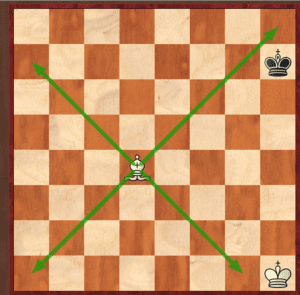
THE KNIGHT
The Knight is the piece that causes most confusion to the beginners (and not only beginners), because it is the only piece that can jump over other pieces.
The easiest explanation of the Knight’s movement includes the use of the alphabet.
I know it seems like you have returned to primary school (first equations, now alphabet), but bear with me. Due to the similarity of the Knight’s movement with the word L, use of alphabet is completely aproppriate here.
Because the knight moves initially for two squares in either horizontal and vertical direction. And the second part of it movement consists of moving one square in the perpendicular direction.
If the oral definition has left you even more confused (which it probably did), take a look at the diagram depicting knight’s movement:
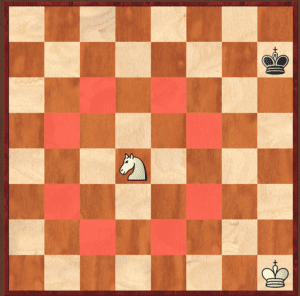
The squares that are highlighted with red indicate squares where the Knight can possibly move.
Finally, there is the question of the Knight’s rating on the piece value scale. Without too much philosophy, the Knight’s value can be considered the same as the value of the Bishop – three pawns.
THE KING
The King is THE most important piece in the game. The movement of the King is the simplest one to understand. The King can move only one square in any direction (vertically, horizontally or diagonally), as demonstrated on diagram below.
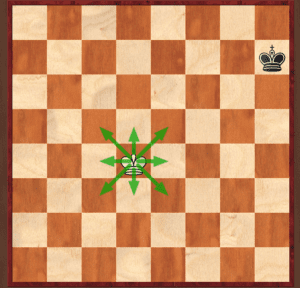
“His Majesty” is the only piece in the game that cannot be captured or “taken”. When opponent’s piece attacks the square where the King is located, it is called “check”. When faced with the check, the King is forced to move away.
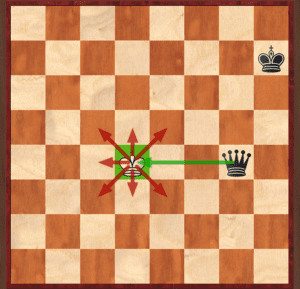
In the diagram above the queen check the king. The king has to move away, on a square not under the control of the queen.
The main goal of the chess game is to give such a check, which leaves the opponent’s King immovable. Such a check is therefore called CHECKMATE. Especially relevant for beginner are basic checkmates, such as queen checkmate, whose basis form is given in the diagram below (for details about queen checkmate, CHECK this post).
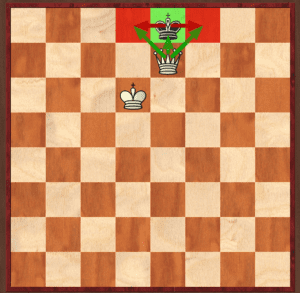
Due to the queen influence (green arrows) on possible squares where king can move (red arrows, red squares) the check by the queen ( green arrow) is called checkmate. Therefore, White wins the game.
Finally, it is also possible to reach such a position, in which every possible square of the king movement is attacked by opponent’s pieces. If there are no other pieces beside the king, the player is unable to move, and the game is therefore drawn.
The chess expression is that the King is STALEMATED.
The diagram below shows one example of a stalemate.
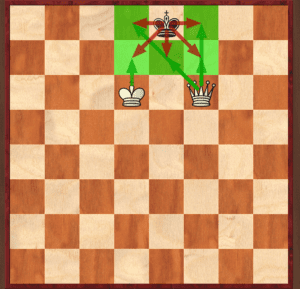
Due to the fact that every neighbouring King square is covered by the White pieces (green arrows), Black King doesn’t have a safe square to move to.
THE PAWN
Finally, last, but not the least, the pawn. An ordinary soldier at the battlefield is often considered as a “cannon fodder”, since he is often sacrificed in the opening. It is so well known, that even chess movies acknowledge that fact.
The movement of the pawn is very complex, despite it’s simplicity. Even when considering only the basis pawn movement, because of it’s different movement in various circumstances it is easy to get confused.
Therefore, I think it is appropriate to mention three basic rules considering the pawn movement:
1 Pawn opening move
Since the majority of the chess games starts with the pawn move, let us start with the pawn opening move.
When moving for the first time, the pawn can move either one or two squares straight forward, assuming that the square is vacant.
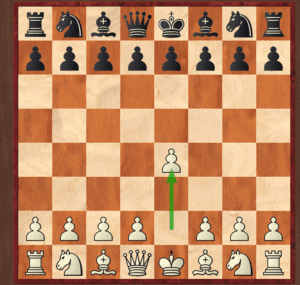
Furthermore, if there is a piece on the neighbouring diagonal square, pawn can either move forward or capture the piece according to the rule number three.
2 Pawn normal move
After the pawn moves in the opening, he can only move one square forward, if the square is vacant.
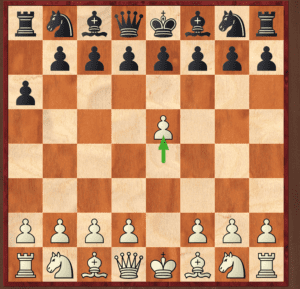
3 Pawn capture
As already mentioned, the pawn attacks only the two squares diagonaly in front of him.
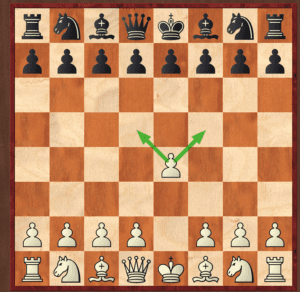
Especially relevant is the fact that the pawn is not forced to capture the piece standing on those squares. Player can choose either to capture the piece according the rule number three, or to advance the pawn according to rules number one or two, as demonstrated on the diagram below.
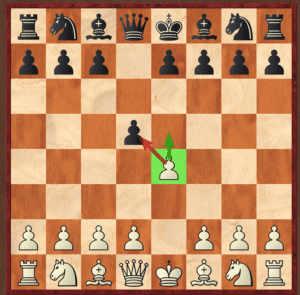
White can either take the black pawn (red arrow) or advance his own pawn without the capture (green arrow)
To sum up, the pawns move one square forward, attack things one square diagonally and move one or two squares in the opening.
Important to note is that the pawns don’t move backwards.
If you dive deeper into the world of chess, you will probably hear that sentence many,many…MANY.. times.
-
SPECIAL MOVES
I’m sorry, although you thought that after reading everything written above you will never have to visit your uncle, we are not done yet. Because in order to complete the picture it is neccessary to mention four more “special” moves not covered in the previous part of the post.
SHORT CASTLING AND LONG CASTLING
First of all let us consider two moves that appear in almost every chess game.
Castling is the single instance when a player is allowed to play the move with two pieces. Both the King and the Rook participate in this maneuvre.
Castling is also the only move where King is able to jump over another piece and also move for more then one square.
While castling, a player takes the King, and moves it for two squares horizontally toward the Rook. Move by the King is followed by the Rook move when the Rook is moved to the square next to the King, but on the opposite side.
Especially relevant is the fact that initally the King can move in two directions. Depending whether the first move was towards the King’s rook or the Queen’s rook, the castling move is somewhat different. Therefore, there are two names based on the direction of the King move – SHORT or KINGSIDE castling and LONG or QUEENSIDE castling.
While I was writing the explanation above, I couldn’t avoid remembering the following Einstein quote:

Since it wouldn’t surprise me if you understood nothing from the everything written above, I will act in the spirit of another old chess quote: “A diagram is worth a thousand words.”
SHORT CASTLING DIAGRAM
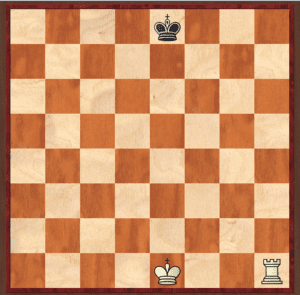

LONG CASTLING DIAGRAM
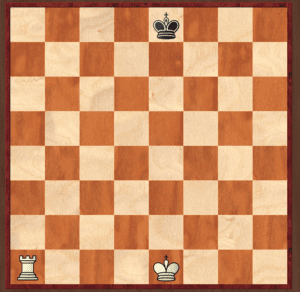
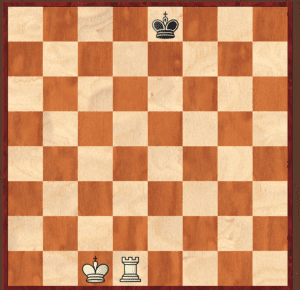
Although now the basic principle of castling is clear, it is not always allowed to play this move. It is therefore neccessary to clarify instances when castling is forbbiden:
a) Castling is not allowed if there are pieces between King andRook
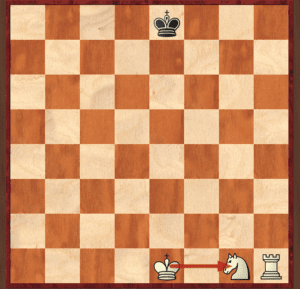
b) Castling is not allowed if the King or Rook have moved previously (even if they have moved back to their original squares). Therefore, castling should be the first move by the both King and the Rook.
c) Castling is not allowed when the king is under the check.
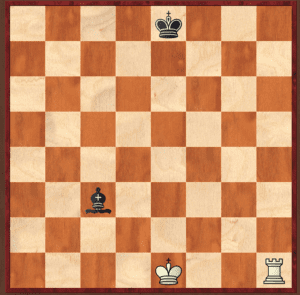
d) Castling is not allowed when a square on the path of the King is under the check (any square on the path, not just the square where the King ends the castling move)
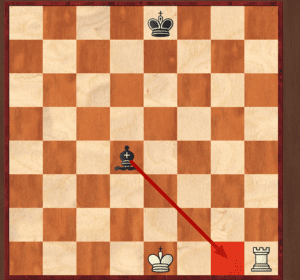
PAWN PROMOTION
Pawn promotion is the move that transformes the pawn from zero to hero.. from ugly duck to swan… from beast to beauty…
Okay, I will stop. But you get the idea.. 🙂
Pawn promotion occurs when the pawn reaches the opposite side of the board. Since pawns don’t move backwards (I told you you will hear it), the player can place a piece instead of a pawn of the very same square.
Pawn promotion is often referred to as a queening. The pawn promotion mechanicsm is depicted on the following diagrams.

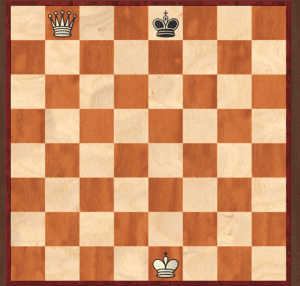
However, more careful reader will have noticed that I have written that the player can place a piece instead of a pawn. Which doesn’t neccessarily mean a queen.
And for those of you who are wondering why on earth would someone do that, consider the following diagram.

It is White to move. It is obvious that he can promote his pawn. However, if he was to promote the pawn to a Queen, he would instantly get checkmated.
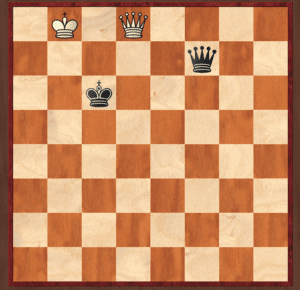
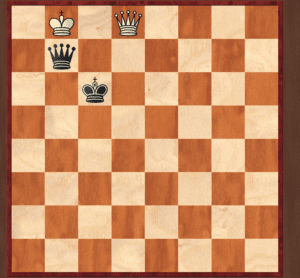
Therefore, instead of naively taking the Queen out, much better move is simply to promote the pawn to a Knight. Such a promotion is also known as UNDERPROMOTION.
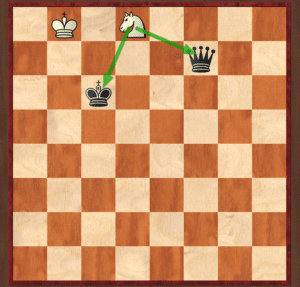
It is visible from the diagram that the Knight is now attacking the King and the Queen simultaneously. Therefore, instead of losing the game, White manages to draw. Because often in chess mind triumphs over the matter.
EN PASSANT
Finally, we arrive to the move that causes most confusion among the ranks of novice players. So if you think that En passant is the name of a fine meal from the French cuisine, it is time to change that.
En passant is a special case when a pawn captures the pawn that has just completed an opening two square advance.
Furthermore, to make en passant possible, it is neccessary for a pawn that captures to find itself on a neighbouring square of a captured pawn after the latter advances.
The capture mechanicsm follows the basic rule for pawn capture. The pawn that captures moves one square diagonaly.
Probably the reader will again understand things most clearly with the help of the diagram below.
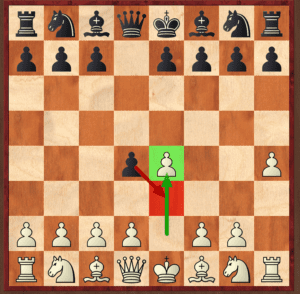
White’s last move has been the advance of the e pawn, as indicated by green arrow. Since Black’s pawn is horizontally aligned with the White pawn, it is possible to take en passant. The Black pawn will find itself on a square behind the White pawn (highlighted red). The diagram below shows the positions after Black has taken en passant.
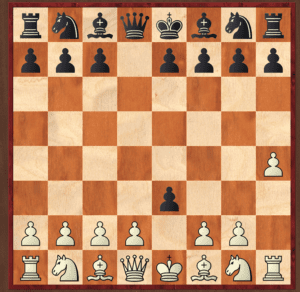
CONCLUSION
Phew… Finally we have arrived at the end of this post. Although I think i have sometimes complicated things a bit, I hope that with the help of the diagrams everyone will be able to learn the chess rules without the “help” of the family members.
And hopefully use that knowledge to beat the hell out of their own nephew one day. 🙂



Many thanks for the diagrams and clarification of castling and en passant!
Actually, all the diagrams and explanations are excellent in clarifying movement!